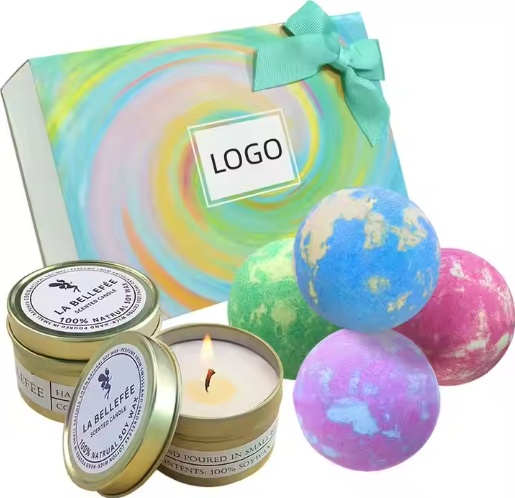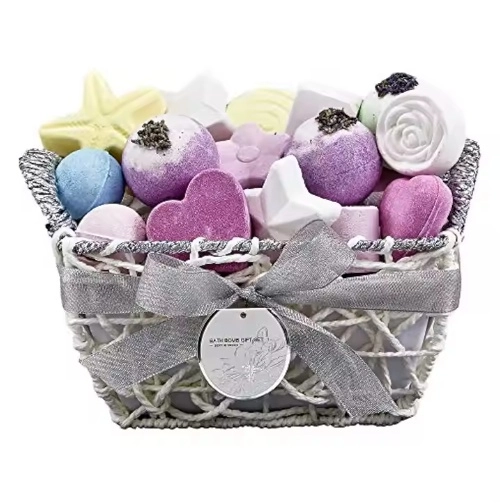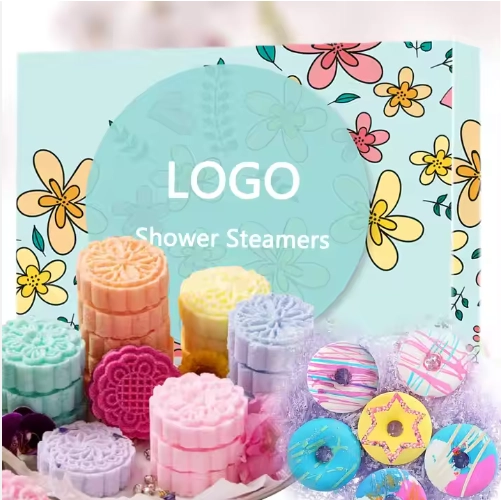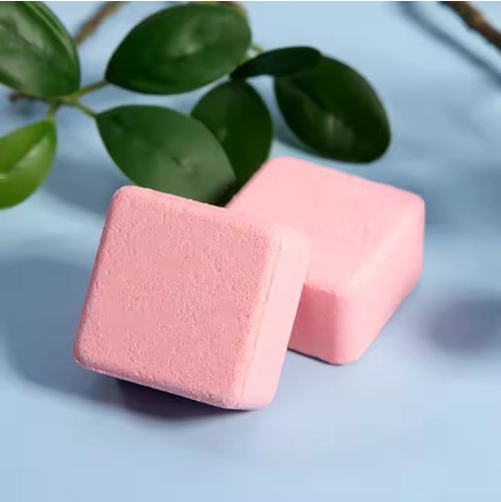What Is A Bath Bomb?
A bath bomb is a simple, gentle blend of sodium bicarbonate, citric acid and other beautiful ingredients to help turn your bath into a fun, soothing haven.
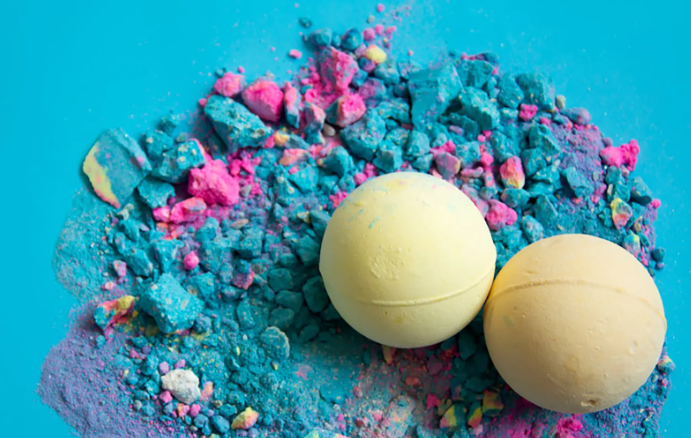
Who Invented The Bath Bomb?
Lush co-founder Mo Constantine invented the first bath bomb in her garden shed in 1989. Since then, we’ve created over 500 different designs and sold over 350 million of our brilliant bath bombs globally.
What Is A Bath Bomb Made Of?
Bath bombs have been around for decades making pretty bath water and providing a relaxing spa experience at home. But do you know what is in a bath bomb? Unlike some other companies, our recipes are carefully designed with premium, all-natural ingredients that make your bathing experience spectacular and sustainable. To inform and enlighten consumers, we explain the role of each component in our fundamental bath bomb formula.
Sodium Bicarbonate (also known as baking soda) + Citric Acid
These two ingredients are the base of any bath bomb. You may know citric acid as an ingredient for canning foods or adding a sour flavour to candy. In a bath bomb, citric acid is responsible for the fizz! Baking soda is known for many things, including baking, cleaning, and deodorizing. However, baking soda can also help mattify oily skin, fight skin infections, and tighten your pores. The high pH of the baking soda and the low pH of the citric acid in the water will neutralize and cause a chemical reaction that initiates a great fizz of a bath bomb while making the bath water silky smooth.
Epsom Salt
Epsom salts contain magnesium sulfate, a mineral with anti-inflammatory and detoxifying benefits for your skin. This ingredient can soothe sore muscles after a workout.
Kaolin Clay
Kaolin clay is made of a mineral called kaolinite and is commonly found in face masks. In our bath bombs, kaolin clay mainly acts as a hardening agent to keep them from crumbling when handled, shipped, or accidentally dropped! Kaolin clay also has skin benefits, such as providing a deep cleanse to your pores, brightening your skin, and removing any impurities.
Organic Coconut Oil
Although Essential Oils have many benefits, bathing directly in them can be harmful to certain parts of your body. Therefore, we use organic coconut oil to help safely distribute essential oils in your bath. We also chose coconut oil because it has additional skin benefits, such as hydration, supplying antioxidants, relieving redness, and minimizing wrinkles.
Essential Oil or Fragrance Oil
Although some of our bath bombs are unscented (Sea Anemone, Poseidon, Jellyfish), we often add essential oils to our bath products to add a level of aromatherapy to your bathing experience. Essential oils are derived from natural plants and are very potent. Essential oils are often used in diffusers, and each scent has unique benefits. Fragrance oils are similar in adding aromatherapy to your bath experience, but fragrance oils are manufactured. Fragrance oils are best used for scents you cannot derive from plants, such as cookie dough or bourbon! Although all our current bath bombs and bath salts use essential oils, we are excited to explore fragrance oils in the future and continue designing creative bath bombs for you.
Mica Powder or Batch Certified Lakes or Water-Soluble Dyes
We use some of these ingredients to add colour to our bath bombs:
Mica is a sparkly natural stone that can be ground into powder and provide a shimmering effect in bath bombs. Mica powder can be natural or synthetic and is used as a colourant in bath bombs. Mica powder provides a pastel colour in bath water and is commonly used for painting bath bombs.
Lakes are artificial powders that require FDA certification. They are oil soluble and produce vibrant coloured water!
Water-soluble dyes are powders that need to be bloomed in water to activate and achieve their true colour prior to adding them to the bath bomb recipe. These dyes are great to use because a little goes a long way!
Polysorbate 80
Have you ever used a bath bomb that left a ring or stained the tub? That's probably because it wasn't using Polysorbate 80! Colorants are part of the bath bomb fun, but cleaning up surely isn't. Polysorbate 80 also helps distribute micas and lakes, as well as the other oil ingredients, to make the tub less slippery.
Water + Rubbing Alcohol
Water and rubbing alcohol are used sparingly in fine mists to keep the bath bomb recipe moist and workable. As the bath bomb dries, these ingredients will also evaporate.
How Does it Work?
The “bomb” aspect of a bath bomb is the fizziness. But what’s going on in those spheres that make them so fizzy? Two of the key ingredients to a bath bomb are citric acid and sodium bicarbonate. You might also know sodium bicarbonate by its more common name, baking soda. These two ingredients are what cause the impressive and delightful fizz when the bath bomb enters the water.
When sodium bicarbonate (NaHCO3) comes in contact with water, the sodium (Na) molecules break off from the bicarbonate (HCO3). At the same time, the citric acid is dissolving, with a single hydrogen ion (H+) separating from the rest of the molecule. When the released hydrogen ion from the citric acid encounters the bicarbonate from the baking soda, another reaction happens! This time, carbon dioxide (CO2) gas is released as one of the end products. The carbon dioxide forms bubbles in the soap and bath water and rushes to the surface with a delightful fizz.
What Is The Purpose Of Bath Bombs?
There can be many benefits to bathing with a bath bomb. Depending on the ingredients, they can help soothe your skin, uplift your senses or calm your mind. A bath bomb is meant to elevate your bathing experience, whatever that means to you.
These are the health benefits you get if you opt to use a bath bomb;
Detox your skin: One of the main ingredients of bath bombs is baking soda, and it is known for its numerous health benefits. It has a great effect and is very helpful in removing toxins. The best way to remove dirt and oil residue on your outer skin layer is to use a bath bomb.
Ease soreness and relax your mind and body: Using a fizzy bath bomb and soaking inside a warm bath for about 20 minutes can be both comfortable and uplifting. It puts you in a calming state and makes you free of worry, thereby boosting your mood. It can also help reduce tension and soreness. Feel free to add soft music and a few candles to get that spa-like experience.
Smooth out dry skin: If you need extra moisture for your dry skin, then a bath bomb is just right for you. It is also great for sensitive skin. As soon as you dissolve the bath bomb in water, it fizzes and helps loosen layers of damaged skin. The oils in bath bombs also help moisturize your skin, so taking a long soak in these hydrating oils will surely keep your skin supple and soft.

